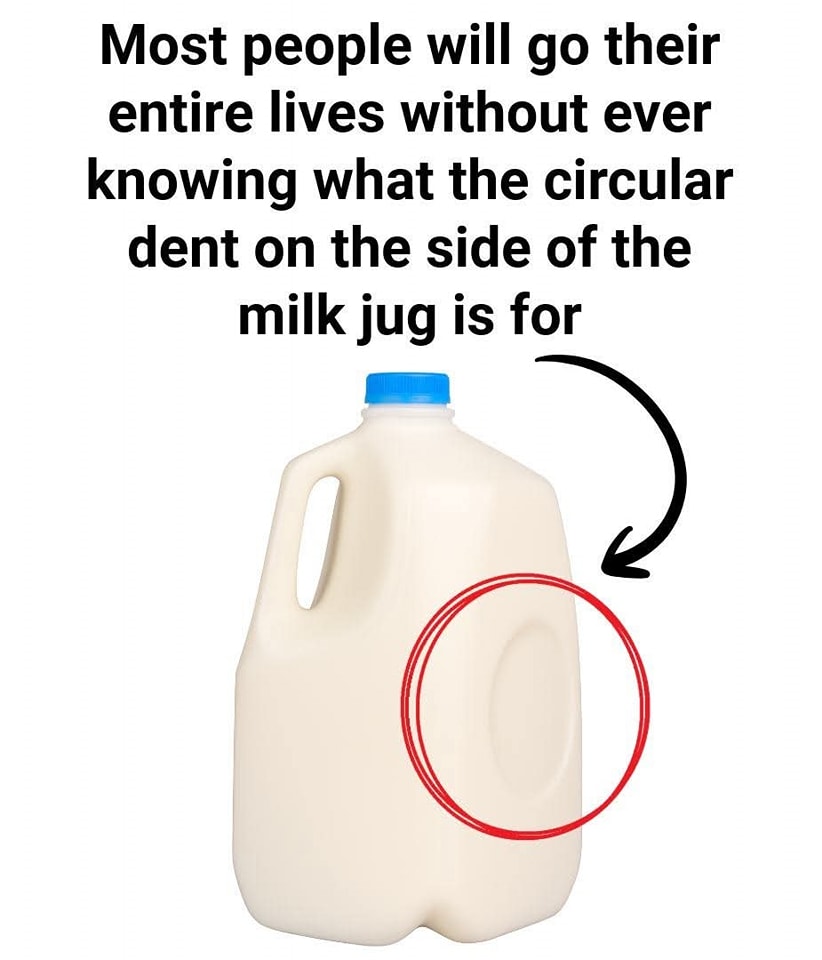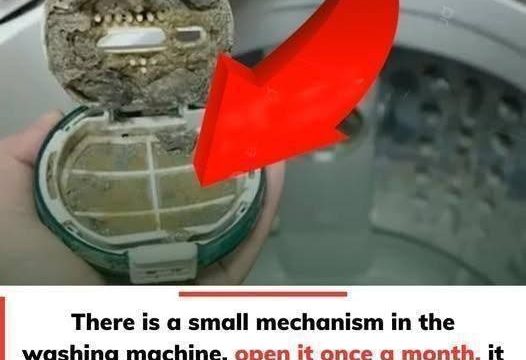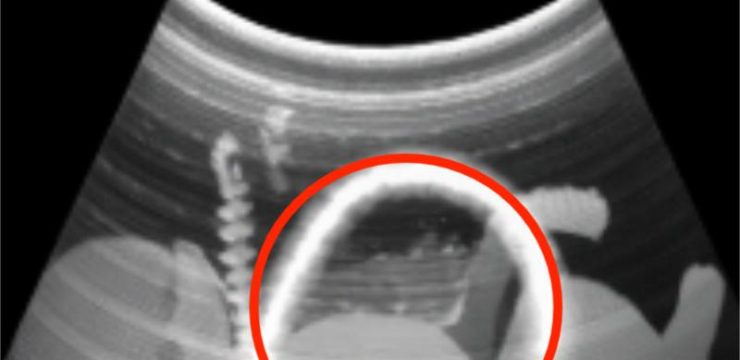If you’ve ever taken a closer look at a plastic milk jug, you’ve probably noticed the odd circular dent on one side. At first glance, it might seem like a manufacturing flaw or maybe just part of the mold—but don’t be fooled. That dent isn’t a defect. It’s actually a clever feature packed with purpose. Believe it or not, that simple little indent helps protect your milk, your refrigerator, your wallet, and even the environment. Let’s break down why this underrated design element deserves more credit than it gets.

It’s All About Pressure Control
Milk expands and contracts with changes in temperature. For example, if the milk jug is filled with cold milk and then sits out at room temperature—even for a short time—the milk (and the air inside the jug) expands. That expansion creates internal pressure, which could easily cause the container to crack or burst if it had nowhere to go. That’s where the circular dent comes in. It acts as a pressure buffer—basically giving the jug some breathing room. As the internal pressure rises, the dent bulges outward slightly, absorbing the stress and keeping the container intact. It’s a small adjustment that prevents a big mess.
The Built-In Shock Absorber
Let’s face it—milk jugs get dropped. Whether it’s slipping out of a kid’s hands or tumbling during grocery unloading, these containers take a lot of abuse. That’s another reason the dent exists. It serves as a shock absorber, helping to prevent the jug from splitting open on impact. Instead of the plastic cracking along a flat surface, the curved dent flexes and redistributes the force of the fall. This design tweak reduces milk spills (and frustration) with every jug that survives a drop.
Structural Integrity Without Extra Plastic
Another benefit of the dent is improved structural strength—without the need for extra plastic. Think of it like a bridge or an archway. Engineers use curves to make structures stronger while using fewer materials. That same principle applies here. The dent reinforces the jug and helps it maintain its shape during stacking and shipping. It’s one of the reasons why these containers can hold a full gallon of liquid while remaining lightweight and flexible. It’s smart, efficient, and cost-effective.
A Built-In Spoilage Warning
Here’s a bonus feature that might surprise you: the dent can actually tell you when your milk has gone bad. When bacteria grow inside spoiled milk, they release gas. That gas has to go somewhere, and it increases pressure inside the jug. If the jug starts to swell, that dent will noticeably bulge outward. So, the next time you’re unsure if your milk is still good, take a look at the dent. If it’s puffed out and the jug feels tight, that could be a red flag. While it’s not a replacement for the sniff test, it’s definitely a helpful early warning system.
Why a Circle?
So, why did designers go with a circle instead of a square or triangle? Circles are incredibly efficient under pressure. Unlike shapes with corners or edges that can act as stress points, a circle distributes force evenly across its surface. That means less chance of cracking, better flexibility, and a smoother molding process during manufacturing. Plus, it’s easier and faster to produce, which keeps production costs low—savings that are passed on to consumers.
Better for the Planet, Too
As if all that weren’t enough, the dent also contributes to environmental sustainability. Because the design reinforces the container, manufacturers can use less plastic without compromising durability. That makes the jugs lighter, which reduces shipping weight and fuel consumption. And when it’s time to recycle, the simpler shape and material make the process easier and more efficient. It’s a small design element that adds up to a significant impact over millions of containers.
A Salute to Smart Design
The next time you pour a glass of milk, take a second to appreciate that little dent in the jug. It’s not just a quirk—it’s a brilliant example of engineering, efficiency, and environmental consciousness all rolled into one. From preventing leaks and absorbing shock to signaling spoilage and reducing plastic waste, that unassuming circle is doing a lot of behind-the-scenes work. Who knew such a small detail could make such a big difference?





